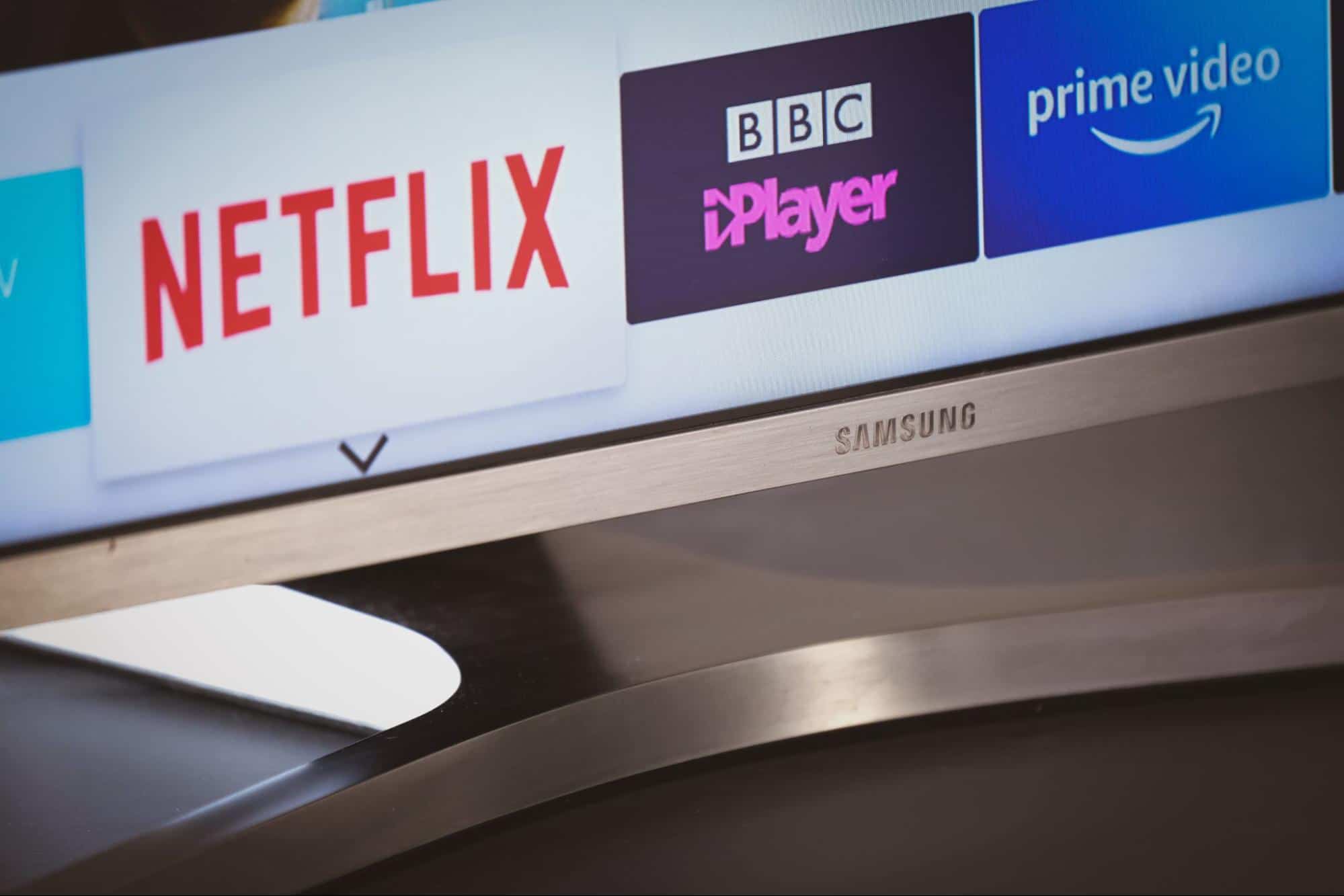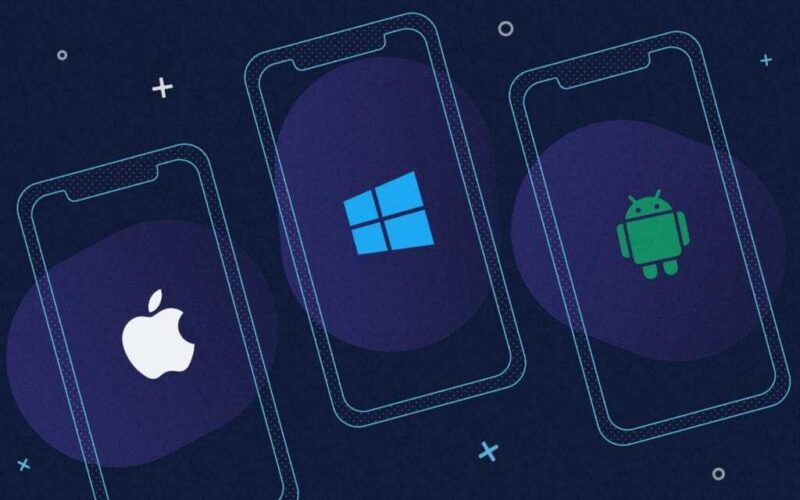Guess what would explode with the rise of 5G?
The entire digital economy, including the on-demand video streaming platforms. Amazon Prime, Hotstar, and Netflix are rising forces in the on-demand media and entertainment industry.
And do you know how business & tech people often address these platforms?
They call it OTT platforms or apps.
But what’s an OTT app?
An OTT or ‘over-the-top’ app is basically an online streaming service that you can easily access on your smartphones, PCs, laptops, tablet, or even your TV. It’s called ‘over-the-top’ because, unlike traditional cable media streaming, the network providers are not in control of what you access/watch.
The network providers only provide the internet connection and you directly sign-up for streaming platforms like Hulu, MX-Player, Hotstar, Netflix, etcetera. That explains the moniker, ‘over-the-top’, i.e., the streaming services are delivered via platforms directly to the end consumers.

If you are in the media and entertainment industry, you might be wondering by now that “cool, I get what OTT is, but how do I get started and make use of it to grow my business in the digital world?
Intrigued?
Well, we’ve got you covered.
Here’s everything you need to know about OTT app development and how you can leverage it to make your business stand out.
OTT Market Growth & Trends
2020 & 2021 have been years of blessing in disguise for the OTT market, and a savior of multiple big-budget movies around the world. It kind of accelerated the growth in the OTT market. Here are Some trends from within the industry.
- Market size, future growth potential, & major players
Did you know that the global OTT market is expected to increase from $121.36 billion in 2020 to $1,039.03 billion in 2027, at a CAGR of 29.4%? The market size of the Indian OTT market is estimated to be $12.5 Billion by 2030, i.e., a 10 fold growth compared to 2021. Major media and entertainment brands are hopping on to the trend and others are closely watching the space.
The global players in the OTT include Netflix, Disney+ Hotstar, Hulu, Amazon Prime, ESPN+, HBO max, etcetera.
The popular Indian OTT players include names like SonyLIV, Voot, Zee5, ALTBalaji, Hoichoi, and Adda TImes.
- Monetization with different models
Different models like the freemium model, ‘subscription video on demand (SVOD), and ‘advertising-based video on demand’ (ADVOD, AVOD) are undergoing experiments in many organizations for monetizing OTT streams. SVOD services like Netflix and Amazon Prime Video have gained the highest popularity among them all.
- Collaboration-led market growth & customer acquisition
Some of the entertainment giants are aiming to take over small and medium-scale businesses to impact and develop a strong market position. For example, Netflix, Inc. announced a collaboration with Abla Fahita in December 2019. And we already know about Disney’s merger with Hotstar to go aggressive in acquiring the Indian OTT audience for their OTT platform.
- Immersive Video streaming & 4K would soon come to the forefront, all eyes on the rollout of 5G
Successful 5G rollout in the major economies of the world, the increasing affordability of VR sets, the rising penetration of the internet across the globe, the rising disposable income of millennials, and gen-z, and the push for vernacular content are all going to fuel the growth of OTT in the coming years.
With such trends, we can expect to see the OTT market spreading its claws all over the media and entertainment industry, the so-called Unicorn startups are no longer going to be a tough feat for many in the OTT.
But, to get a major pie of all the growth potential that OTT beholds, you need to enter the space before it shoots for exponential growth. Shouldn’t you already be aware of how these OTT apps can be built to boost your own media business? You should, right?
So, let’s dig deeper into the details of building an OTT platform.
How to build a highly scalable OTT video streaming app?
Ever since Covid-19, businesses have been more focused on revamping the technology used by their OTT services to offer a seamless and engaging experience to customers. Every single OTT business is trying to bring in something new and better than what customers have seen/experienced already. And by ‘new’, we didn’t mean just content, we also meant about the engagement. Media and entertainment businesses are serving 360-degree video experiences for their VR-ready audience. The TikTok, Reels, Stories, Shorts, and Snap generations want something instantly gratifying, and so media houses have to keep up with them. ‘Building community’ and ‘modern short content sharing’ features are ideally shipped as part of the app. An example could be emoji reactions in the live streams or live chat features. All that could be iteratively built up and integrated into the app. But before that, we need to get the underlying basic app architecture ready. We shall design the app for high scalability, performance, and security. The app should be highly resilient for the future evolution. This is achievable by keeping its architecture highly scalable.
Wondering how to build a highly scalable OTT app for growing your media business?

Here are some tips that could be useful to you while building an OTT app-
- Build for varying bandwidth: Provide fast and efficient streaming services with minimal buffering to your customers even during poor network connectivity, esp for the live streams.
For example, you could take inspiration from MX Player which has created a ‘Data Saver Mode’ to reduce broadband usage. They became the first Indian OTT service provider to enable H.265 (HEVC) transcoding for live and on-demand video, and improved compression by combining AI and object identification.
- Use AIML:
Incorporate cutting-edge technologies like Machine Learning and deep video analytics to further enhance intelligent video streaming systems, user engagement, and retention, etcetera.
Users/customers often prefer watching similar content based on their previous viewing experience. Keeping this in mind, Context-Aware Encoding (CAE) employs machine learning and deep video analytics to get the best quality for each video while using the fewest bits possible.
Unlike other encoding solutions, CAE considers the overall context of the video experience while producing a specific ‘encoding profile’ customized to the content complexity and predicted viewing environment of each particular video. As a result, the video is of higher quality, starts up faster, and buffers less.
- For any OTT platform/app, one of the most important aspects is to offer ‘design thinking’ led intuitive UX/UI to its customers. Having a seamless UX/UI gives you an edge over your peers, boosts engagement, and helps maintain low churn rates.

- Efficient caching techniques have become increasingly critical, particularly as 5G and mobile edge processing technologies become more mainstream. OTT platforms must constantly optimize their streaming services to harness these technologies.
- Build for accessibility across web, mobile, and TV
Aside from mobile apps, a few OTT platforms, notably MXPlayer & Hoichoi, have also tapped into the capabilities of Progressive Web Apps (PWAs). PWAs help you to build and expand your presence, consumer base, and market since they help you create a smooth mobile web UX without the need to download any mobile apps.
For example, the Bengali OTT platform- ‘Hoichoi’, has launched its PWA, and by doing so, it offers a seamless experience to its customers- reduced file size, minimal buffering, and low bandwidth consumption. Cross-platform technologies are the recommended way to build OTT solutions for multiple platforms. Read more about cross-platform development on Codewave Insights.
Many small-scale media companies, do not have digital UI/UX design, development, and digital talent in general. They find it extremely hard to jump into OTT app development, as the cost of app development is definitely going to have an impact on the accounts books, and inexperience with digital design and tech is going to pose challenges.
Are you worried about the same?
Well, Codewave is here to your rescue.
We have 9+ years of experience in developing highly scalable mobile and web apps with cutting-edge technologies and modern, secure, high-performing architectures. Connect with our design thinking and development consultants at hello@codewave.com, and we’ll come up with the best solution for you.
A sneak peek into the OTT Tech Stack
Building a highly scalable and successful OTT app is not an easy task.
You need to have the right tech stack for building it, or else your app might end up facing issues like increased screen load time, poor design, high latency, etc. Even if an OTT provider has worked hard on curating/creating high-quality binge-worthy content, its success isn’t guaranteed unless it’s backed up by a solid tech stack.
Let me just quickly give you an overview of the tools and technologies used in OTT apps-
- The front-end and backend stack of OTT apps includes programming languages like Python, C++ (GO), HTML5/CSS3, Java, JavaScript (Node.js, React JS, AngularJS, VueJS, etc.), Ruby (Ruby on Rails), etcetera. For mobile apps, we can use Kotlin/Java for Android and Swift for iOS. For cross-platform applications & web apps, we can use React Native, Flutter, Cordova/Ionic.

For inspiration, let’s take a look at Netflix’s OTT tech stack:
Popular OTT platform- ‘Netflix’
Ever wondered what goes into making your exciting binge-watching movie/show nights on Netflix such a seamless experience?
No?
Well, you’re not the only one.
Most of us often miss out on appreciating/knowing the technical aspects that support the whole functionality of Netflix.
So, let’s dive deeper into the tech stack of $289 Billion+ giant in the OTT world, Netflix!!!

- Netflix has been very vocal about its tech stack evolution and cloud migration on its blog. Netflix has successfully transitioned from an on-premise architecture to a complete cloud computing architecture. It saved them a lot of per stream costs, and they channelized the savings to further grow their platform.
- On a broad level, Netflix leverages open source technologies and programming languages like Java, React, NodeJs (JavaScript), Python.
- The DB stack of Netflix includes – MySQL, PostgreSQL, Amazon RDS, DynamoDB, Cassandra, Atlas DB, etcetera.
- The AWS-specific stack of Netflix includes DynamoDB, object storage tech Amazon S3, a CDN, and caching technology – Amazon Cloudfront. Besides Netflix uses the AWS elastic transcoder for H.264 transcoded video streaming. This is crucial to deliver a consistent streaming experience for varying internet bandwidth.
- Kafka for streaming, Hadoop for business analytics, WinJs for windows app development, Jira for agile project management, Amazon SES for message/email notification streaming, and several other DevSecOps technologies and processes work in tandem to ensure smooth operations of Netflix and other OTT apps as well.
- Besides the core-development-tech, the extensive use of AI/ML across the micro-apps within Netflix, mobile-optimized encoding, cloud security, cloud management, team collaboration, and error monitoring tech plays a major role in the success of not just Netflix but any modern digital organization.
You might also be wondering are there no operational challenges? How do they manage all these technologies and ensure that these work flawlessly?
Well, it’s no rocket science. It’s cloud magic, i.e., minimum infrastructure management, maximum application & logic development. Read & download our whitepaper on the security of AWS infrastructure.
Based on my research this is all I could share with you, but if you want an in-depth look at Netflix’s tech stack, read here.
By now, I’m sure you’ve understood that,
Amazing content + robust stack = OTT success.
Even if your organization decides to spend millions on marketing, you might still lose your customer base unless you have the right tech stack to build your OTT app.
But don’t worry! Our experts will build the perfect app using a robust tech stack, just for you!
Summing Up…
This article has given you an insight into OTT apps, upcoming OTT market trends, tech aspects of OTT app development with the example of Netflix.
What’s next?
Get in touch with our development team, for further consultations on OTT app development. You may also want to explore our works, case studies, insights, and services.
For the latest updates on our projects, stay connected with us on LinkedIn.
Also, you could follow us on our other social media handles-
Twitter, YouTube, Facebook, Instagram
Frequently Asked Questions(FAQs)
How Can OTT Video Apps Help You Expand Your Video Business?
OTT video apps can enhance your video business in many ways. By publishing an OTT app on the Android’s PlayStore & Apple’s AppStore, you will not only gain a wide customer reach i.e., 6Bn+ people, but you will also get an opportunity to engage your audience more often, and be accessible round the clock. And all this could result in a rapid increase in revenues.
How does VOD differ from OTT?
OTT refers to content streamed via the Internet – and it falls under VOD services. OTT comprises of Subscription VOD (SVOD), Transactional VOD (TVOD), and Advertisement VOD(AVOD) in general. VOD is a superset of OTT & Satellite-based cable networks.
How much does OTT video app development cost?
The OTT app’s MVP development cost is proportionate to the features that you are shipping in the MVP, the infrastructure you chose, whether you are hiring talent or augmenting your team with an IT outsourcing partner, etcetera. We have a detailed insight covering various aspects of app development costs. Please do read it.
How do you make an OTT app?
Build your OTT app for a varying network bandwidth, and deploy streaming services that work seamlessly during live streams. Harnessing design thinking, AI/ML, caching & development best practices, you can launch an OTT app that scores great on scalability, usability, performance, and security metrics.
How much does it cost to develop an OTT app?
Like NFT or app for the metaverse, OTT app development costs also highly depend on the features that needs to be built into the app. A simple OTT app may cost upto USD 10k, an OTT app with gamification, AI/ML, high performance tech stack, and robust security would cost somewhere between USD 20k to USD 200K.
What is OTT architecture?
On a high-level, OTT architecture consists of frontend and backend technologies in the cloud (serverless). This includes CDN, caching technology, regular DB, video transcoder, streaming technology, collaboration tools, AI/ML capabilities, etcetera.








